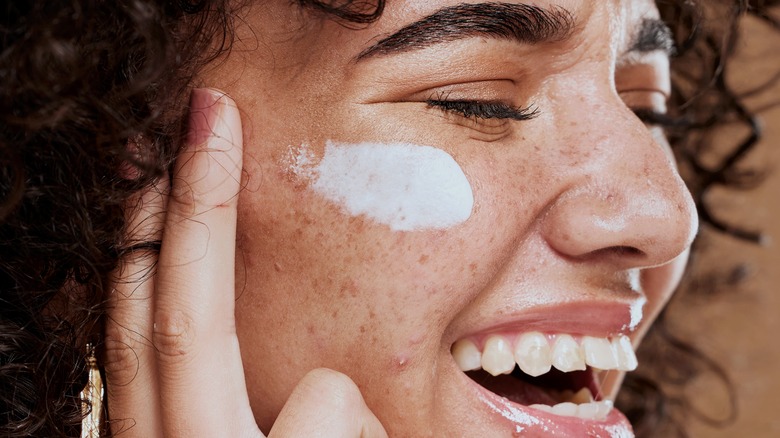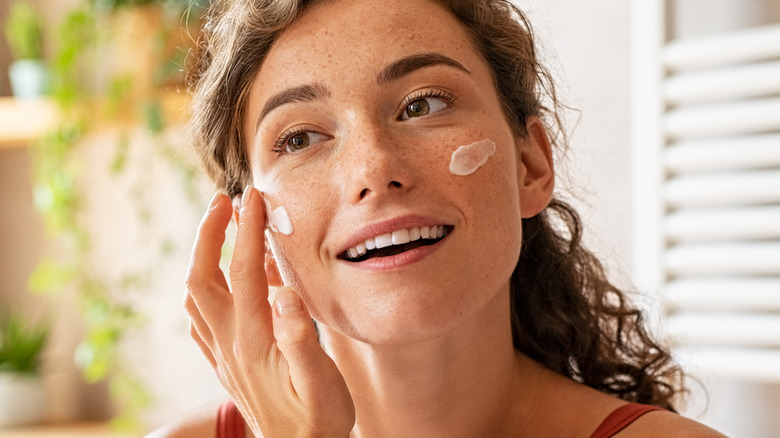Can You Use Tranexamic Acid And Niacinamide Together?
Every runway show has a vedette, and the same goes for skincare. When building a skincare routine, you'll always have to look out for that clinically proven "powerhouse" or "holy grail" ingredient that can promise your skin a legit makeover. There are go-to ingredients if you want to get rid of acne, and there are pick-me agents for those with fine lines and wrinkles.
While it's true that dermatologists often recommend certain hero ingredients for specific skincare concerns, you can still up their benefits even further by pairing them with other superstars to accelerate your journey to healthier and brighter skin. Not all powerhouse ingredients cancel one another out, and it doesn't hurt to take a maximalist approach if you know it's safe to do so. For instance, vitamin C, vitamin E, niacinamide, salicylic acid, retinol, and hyaluronic acid, get along well and work together for your good.
In this article, we take a look at the potential pairing between two skincare ingredients that are pretty heavy hitters on their own merits, namely tranexamic acid and niacinamide. So, can these two make a power couple? The answer is yes, and we'll show you how to use them together.
What is tranexamic acid?
Tranexamic acid, a synthetic derivative of the protein lysine, which is essential for the synthesis of collagen in the skin and bones, can hinder the breakdown of the fibrin clot by attaching to plasminogen and obstructing the interaction of "plasmin(ogen)" with fibrin, according to a 2012 study published in the journal Drugs. For this reason, tranexamic acid was conventionally used to treat post-op and nose bleeding and dampen heavy periods.
Tranexamic acid also demonstrates a remarkable ability to enhance skin tone and prevent pigment formation. A 2017 study published in the journal Dermatology and Therapy shows patients who used topical tranexamic acid reported a remarkable reduction in their Melasma Area and Severity Index (MASI) scores — a common measure of the extension and intensity of melasma. Pointing out that tranexamic acid inhibits melanin synthesis, Bella Skin Institute's founder and dermatologist Anna Guanche tells Healthline: "Tranexamic acid for the skin can act as a brightening agent to reduce dark spots and improve hyperpigmentation." This ingredient is well-tolerated for all skin types. It is a great option for those struggling with melasma, uneven complexion, or pigmentation as a result of sun damage or acne scarring.
What is niacinamide?
If you swear by the moisturizing step for great skin, you're probably no stranger to niacinamide, a mega hydrator with a litany of hydrating and soothing qualities. "Niacinamide, also known as nicotinamide, is the physiologically active form of niacin or water-soluble vitamin B3," dermatologist and Brown Skin Derm's founder Adeline Kikam tells CNN. According to Dr. Kikiam, niacinamide helps regulate excess oil production, minimizing acne breakouts and diminishing the appearance of pores.
According to a 2004 study published in the Journal of Cosmetic Dermatology, niacinamide helps boost the keratin levels in your skin, contributing to strengthened epidermal barrier function, reduced water loss, and enhanced moisture retention. For this reason, niacinamide can be used in products that address skin concerns such as uneven skin tone, age spots and loss of elasticity, and acne. Overall, niacinamide works remarkably well to restore damaged skin. "Nicotinamide helps restore cellular energy, repair damaged DNA, and reduce the immunosuppressive effects of sun-induced UV rays," dermatologist Dr. Jennifer Herrmann tells Byrdie.
Can they go together?
To reiterate, yes — tranexamic acid and niacinamide make a great couple. Plus, these actives are pretty well-tolerated on most skin types and using them together can optimize your hyperpigmentation treatment. Since tranexamic acid is often found in serums and niacinamide in moisturizers, it makes sense to slather up with tranexamic acid before layering with niacinamide.
According to assistant professor of dermatology at NYU Langone Health Mary Stevenson, via Healthline, tranexamic acid works incredibly well with a brightening agent such as niacinamide or vitamin C. This power duo can be used in the morning and the evening. If used in the morning, apply these formulas to your face before lathering with a high-factor sunscreen to ward off sun-induced discoloration and avoid worsening your pigmentation.
If you're new to tranexamic acid, you should start using it once daily to build tolerance, Dr. Parisha Acharya tells Refinery29. If your skin reacts well to it, you can increase the frequency to twice per day. "You can use it after a vitamin C serum and before SPF in the morning, and after your retinol in the evening to get the best penetration," says Dr. Acharya.



